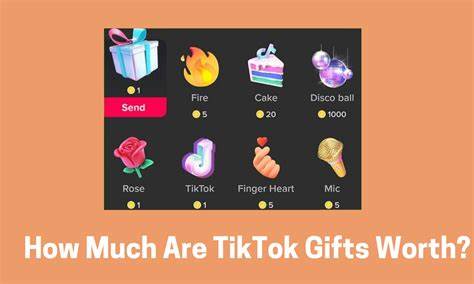The field of Natural Language Processing (NLP) has come a long way since its inception. With the advent of advanced technologies like Machine Learning (ML) and Artificial Intelligence (AI), NLP has evolved into a sophisticated discipline that can mimic human language with increasing accuracy. One such remarkable achievement in the field of NLP is the development of the Generative Pretrained Transformer (GPT) series. The latest iteration of this series, GPT-4, promises to take NLP to an entirely new level. In this article, we will take a closer look at what GPT-4 is, what it can do, and how it differs from its predecessor.
What does GPT means?
GPT stands for “Generative Pre-trained Transformer”. It is a type of neural network architecture that is commonly used in natural language processing (NLP) tasks such as language modeling, text classification, and machine translation.
The GPT architecture is based on a type of deep learning model known as a transformer, which was introduced in a 2017 paper by researchers at Google.
GPT models are pre-trained on large amounts of text data, which enables them to generate natural language text that is coherent and grammatically correct. The latest version of this architecture is GPT-4.
Now, What is GPT-4?
GPT-4 is the fourth iteration of the GPT series, which is a family of language models that uses deep learning to generate human-like text. Like its predecessor, GPT-3, it is a neural network with billions of parameters, making it one of the largest language models ever built. The model is designed to analyze and understand large amounts of text data and generate high-quality text in response to a given prompt. GPT-4 is expected to have even more advanced capabilities than its predecessor, with the potential to revolutionize NLP.
GPT-4 has the potential to transform the way we interact with language and communicate with each other, and it will be important to monitor its development and use to ensure that it is used ethically and responsibly.
What can GPT-4 do?
GPT-4 is expected to have a wide range of applications in various fields, including natural language understanding, question answering, language translation, chatbots, and content generation, to name a few. Here are some of the key capabilities that GPT-4 possess:
- Improved language understanding: GPT-4 have a better understanding of human language and is able to answer questions with more accuracy and depth than GPT-3.
- Multilingual support: GPT-4 will be able to generate high-quality text in multiple languages, making it a valuable tool for language translation and communication.
- Better memory and reasoning: GPT-4 is able to remember more information and perform more complex reasoning tasks than its predecessor, making it a powerful tool for data analysis and decision-making.
- Enhanced creativity: GPT-4 is able to generate more creative and original content, making it a valuable tool for content creation, advertising, and marketing.
- Improved performance: GPT-4 have faster inference times and require less computational power than GPT-3, making it more accessible and practical for a wider range of applications.
Difference between GPT-3 and GPT-4
While GPT-4 is expected to build on the capabilities of GPT-3, there are some key differences between the two models. Here are some of the most significant differences:
- Size: GPT-4 is larger than GPT-3, with trillions of parameters.
- Multilingual support: GPT-4 have more advanced multilingual support than GPT-3, with the ability to generate high-quality text in multiple languages simultaneously.
- Reasoning capabilities: GPT-4 is able to perform more complex reasoning tasks than GPT-3, making it a valuable tool for data analysis and decision-making.
- Memory: GPT-4 have a better memory and be able to retain more information than GPT-3, making it more adept at handling long-form text.
- Creativity: GPT-4 is also more creative than GPT-3, with the ability to generate more original and engaging content.
Challenges and concerns
While GPT-4 promises to be a significant advancement in the field of NLP, it is not without its challenges and concerns. Here are some of the key issues that may need to be addressed as GPT-4 is developed and deployed:
- Ethical concerns: As with any advanced AI technology, there are concerns about the potential misuse of GPT-4, such as the spread of disinformation or the creation of biased content.
- Energy consumption: The sheer size of GPT-4 means that it will require a vast amount of computational power, which raises concerns about its energy consumption and carbon footprint.
- Access and affordability: GPT-4 is likely to be expensive to develop and deploy, which raises concerns about access and affordability. It may only be accessible to large companies and organizations with the resources to invest in the technology.
- Data bias: Language models like GPT-4 are only as good as the data they are trained on, which means that bias in the training data could lead to biased outputs from the model.
- Human labor displacement: As language models like GPT-4 become more advanced and capable, there are concerns that they may replace human workers in fields such as content creation and customer service.
READ ALSO – Why did Kyle Chrisley Lose Custody of Chloe?
Conclusion
GPT-4 represents a significant step forward in the field of NLP, with the potential to transform the way we interact with language and communicate with each other. With improved language understanding, multilingual support, better memory and reasoning, enhanced creativity, and improved performance, GPT-4 promises to be a valuable tool for a wide range of applications.
However, as with any advanced AI technology, there are concerns about ethical issues, energy consumption, access and affordability, data bias, and human labor displacement that need to be addressed. As GPT-4 continues to be developed and deployed, it will be essential to ensure that it is used ethically and responsibly to maximize its potential benefits while minimizing its risks.







